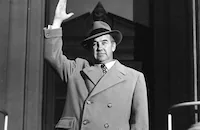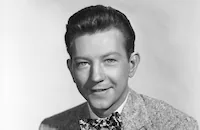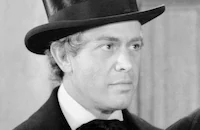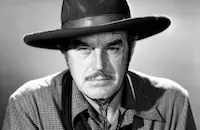Largely forgotten now but popular in his day, British novelist Percival Christopher Wren (1885-1941) reflects in his writings the colonial-era values of patriotism, self-sacrifice and a belief in helping the "less fortunate" throughout the world. Born to a privileged family in Devonshire, he graduated from Oxford with an M.A. before serving in the French Foreign Legion. He then moved to Bombay, India, where he worked for ten years as an assistant director of education and physical culture. Returning to the military and earning the rank of major, he fought in East Africa in World War I, then settled in London, where he wrote the bulk of his fiction. His adventure stories drew upon his own experiences in India and Africa and often involved the French Foreign Legion. He described his work as being intended for the "cleanly-minded, virile, outdoor sort." By far his best-known novel is Beau Geste, which was first made into a film in 1926. The sequels Beau Sabreur (1926) and Beau Ideal (1928) were adapted into films in 1928 and 1931, respectively.
Initially Beau Geste (1939) was slated to be directed by Henry Hathaway as Paramount's first Technicolor feature. With this film Gary Cooper satisfied his contract for Paramount, allowing him to freelance subsequently. Ray Milland, on the other hand, welcomed the chance to star in an action adventure after numerous drawing room comedies where he played the suave sophisticate. Susan Hayward, who made her debut in this film, replaced Patricia Morison as Isobel Rivers. In order to make the film more palatable to French audiences, Lejaune, the sadistic French commander of the novel, was transformed into the Russian Markoff. Shot on location in Buttercup Valley near Yuma, Arizona, the film used the same site as the 1926 film, albeit reconstructed - a desert city complete with roads, 136 tents and a movie theater. The valley was eventually renamed as "Beau Geste Valley" in honor of the productions.
The 1939 adaptation of Beau Geste had a difficult time living up to the overwhelming critical and commercial success of Herbert Brenon's 1926 silent version starring Ronald Colman. Nonetheless, a reviewer in Variety wrote that the remake of Beau Geste "is still good cinema" and that "the absurd nobility, brotherly devotion and self-sacrifice of the Geste tribe are still unflagging ingredients for action melodrama." Brian Donlevy in particular was praised by critics for his memorable portrayal of the cruel Markoff. The story was filmed yet again in 1966, this time directed by Douglas Heyes and starring Guy Stockwell. A parody entitled The Last Remake of Beau Geste (1977) was directed by and starred wall-eyed comedian Marty Feldman, incorporating footage from the 1939 version cleverly edited to appear as if Feldman were having a conversation with Gary Cooper.
Director/Producer: William A. Wellman
Screenplay: Robert Carson, based on the novel by P. C. Wren
Cinematography: Theodor Sparkuhl
Editing: Thomas Scott
Music: Alfred Newman
Principal Cast: Gary Cooper (Michael "Beau" Geste), Ray Milland (John Geste), Robert Preston (Digby Geste), Brian Donlevy (Sergeant Markoff), Susan Hayward (Isobel Rivers), J. Carrol Naish (Rasinoff), Albert Dekker (Schwartz), Broderick Crawford (Hank Miller).
BW-120 min.
By James Steffen








































